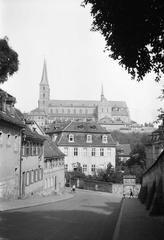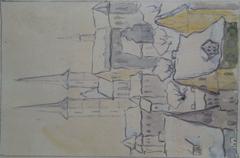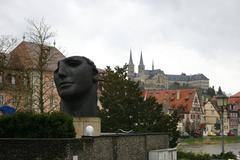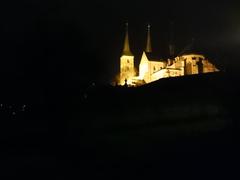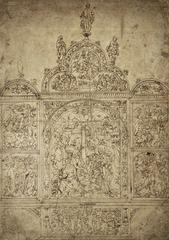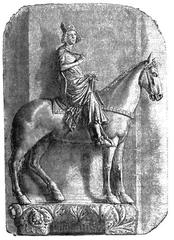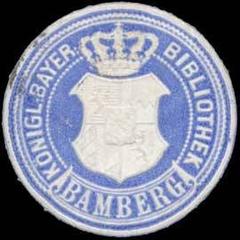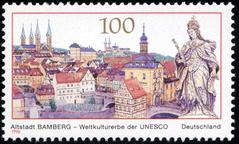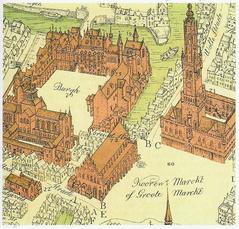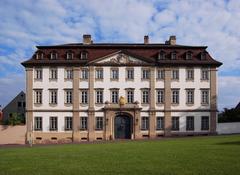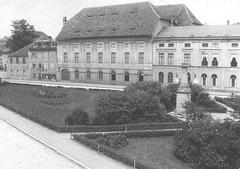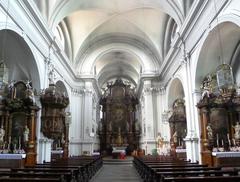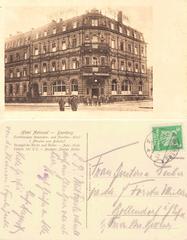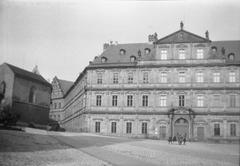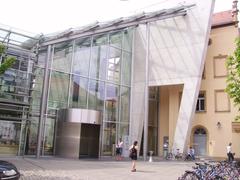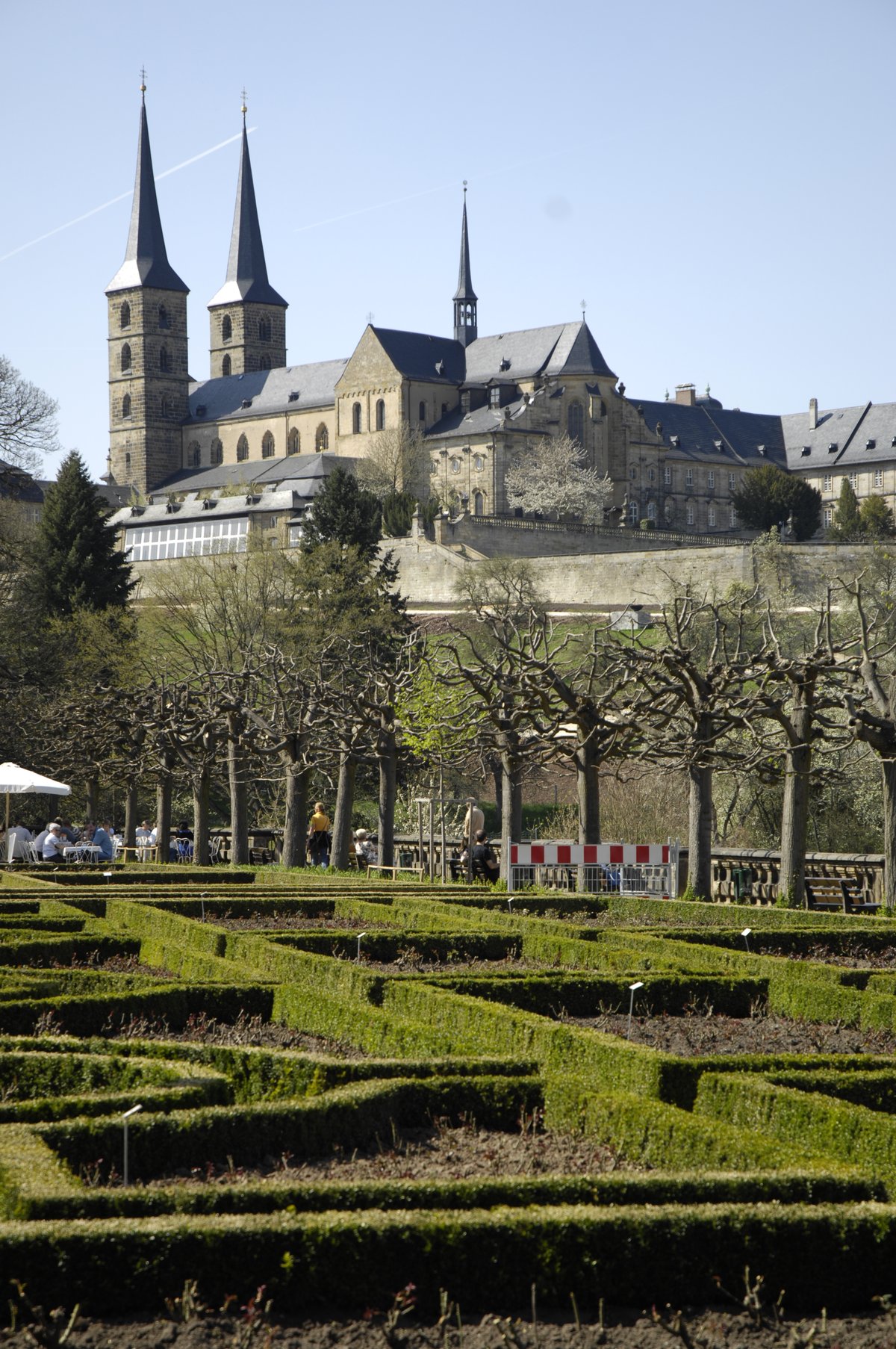
Michaelsberg Abbey Bamberg: Visiting Hours, Tickets, and Complete Travel Guide
Date: 14/06/2025
Introduction
Michaelsberg Abbey (German: Kloster Michaelsberg), perched atop Bamberg’s Michaelsberg hill, is among the city’s most celebrated historic sites. Established in the early 11th century under Emperor Henry II and Bishop Eberhard, the abbey has stood as a beacon of spiritual, cultural, and architectural heritage for over a millennium (Bamberg Tourism; UNESCO World Heritage Centre).
The abbey is renowned for its architectural evolution—from Romanesque foundations and Gothic elements to Baroque and Rococo grandeur. Artistic highlights include the celebrated “Garden of Heaven” ceiling fresco, which features over 580 medicinal plants, and the tomb of Saint Otto of Bamberg, a pivotal religious figure.
While restoration work is ongoing, the abbey’s grounds, gardens, and panoramic terraces remain open to the public. Here, visitors can enjoy sweeping views of Bamberg, explore tranquil gardens, sample traditional Franconian cuisine, and participate in guided tours that reveal the abbey’s rich history (Bamberg Historical Sites Guide; Reverberations). This detailed guide provides all the information you need on visiting hours, tickets, accessibility, highlights, and travel tips to make your visit memorable.
Contents
- Historical Overview
- Architectural Highlights
- Artistic Treasures
- Gardens and Panoramic Views
- Restoration and Accessibility
- Visiting Information (Hours, Tickets, Tours)
- Getting There
- Practical Tips
- FAQs
- Nearby Attractions
- Conclusion
- Sources
Historical Overview
Origins and Foundation
Michaelsberg Abbey was founded in 1015, soon after Emperor Henry II established the Diocese of Bamberg in 1007. Its dedication to the Archangel Michael was intended to reinforce Bamberg’s ecclesiastical significance (Bamberg Tourism). Benedictine monks settled here, supported by imperial patronage, and the abbey quickly grew into a major spiritual and intellectual center (UNESCO World Heritage Centre).
Growth and Influence
Throughout the Middle Ages, the abbey flourished, renowned for its scriptorium, library, and contributions to art and music (Bamberg State Library). Its monks played a key role in shaping Bamberg’s spiritual, cultural, and economic life.
Key Historical Events
- Medieval Prosperity: The abbey accumulated wealth through land grants and became a leading institution in Franconia.
- Reformation and Counter-Reformation: It remained a bastion of Catholicism during religious upheavals (Bamberg Diocese).
- Thirty Years’ War: The abbey suffered occupation and damage but was later magnificently restored in the Baroque style.
- Secularization (1803): The monastery was dissolved, but the church continued to serve religious and community purposes (Bavarian State Office for Monument Protection).
Architectural Highlights
Romanesque Foundations
The original abbey church, consecrated in 1021, embodied Romanesque architecture—massive stone walls, rounded arches, and a focus on spiritual solemnity (SpottingHistory). After an earthquake in 1117, the structure was rebuilt and consecrated in 1121, with Romanesque features still visible in the crypt and lower towers (Wikipedia).
Baroque and Renaissance Transformations
A fire in 1610 and subsequent damage during the Thirty Years’ War prompted extensive rebuilding. The nave and west façade were reconstructed in the Late Renaissance and Baroque styles, with contributions from the Dientzenhofer brothers, known for their dynamic two-storey façades and elaborate stuccowork (Archiseek; Life Globe). The terraced gardens and Baroque terraces, completed in the early 18th century, provide sweeping views over Bamberg.
Rococo Interior Decoration
The 18th-century Rococo plasterwork by Johann Georg Leinberger, including the iconic “Death Blowing Bubbles” motif, adds a poignant and playful touch to the abbey’s interiors (InkedMag).
Artistic Treasures
The “Garden of Heaven” Ceiling Fresco
This unique ceiling fresco from 1617 depicts over 580 plant species—local and exotic—underscoring the Benedictine tradition of botanical knowledge (Life Globe; 1xMarketing). Painted by Melchior Steidl, it is considered a masterpiece of Baroque art.
Stained Glass, Organ Loft, and Stone Carvings
Stunning stained glass windows, intricate stone carvings, and a renowned Late Renaissance organ loft amplify the abbey’s artistic appeal (Archiseek).
Funerary Monuments and Saint Otto’s Tomb
The church holds the grave of Saint Otto of Bamberg, an important pilgrimage site. Numerous gravestones and bishop memorials, relocated here in the 19th century, exemplify ecclesiastical funerary art (SpottingHistory).
Gardens and Panoramic Views
The Baroque terraced gardens are a highlight, with formal parterres, medicinal plants, and fountains echoing the themes of the ceiling fresco. The terraces offer panoramic vistas of Bamberg’s old town and the Franconian countryside (Life Globe; 1xMarketing).
Restoration and Accessibility
Michaelsberg Abbey is undergoing an extensive restoration project (2016–2025), with the church interior currently closed. The gardens, terraces, and restaurant remain open. Some areas have limited accessibility due to the site’s historic nature. Wheelchair users can access the main gardens and terraces, but uneven paths may still pose challenges (EPFL-Pavilions).
Visiting Information
Visiting Hours
- April to October: 9:00 AM – 6:00 PM daily
- November to March: 10:00 AM – 4:00 PM daily
- Check the official site for holiday closures or changes during renovations.
Tickets
- Abbey grounds and gardens: Free
- Guided tours (when available): Ticket required (€5–€6 general, discounts available)
- Franconian Brewery Museum: Separate ticket
Tickets for tours can be booked online or at the Bamberg tourist information center. Advance booking is recommended during peak seasons.
Guided Tours and Events
Guided tours delve into the abbey’s history, art, and architecture. English-language tours are available by prior arrangement. Seasonal events and concerts are occasionally held in the gardens or terrace.
Getting There
- On Foot: 10–15 minutes uphill from Bamberg’s Old Town (Altstadt), beginning behind the Neue Residenz.
- Public Transport: City buses serve the Michaelsberg area; check route details at the tourism website.
- By Car: Limited parking near the base of the hill; walking is required for the final ascent.
Practical Tips
- Best Time to Visit: Early morning or late afternoon for tranquility and optimal photography lighting (1xMarketing).
- Comfortable Footwear: The ascent is moderately steep and may be uneven.
- Facilities: Public restrooms available; a restaurant on site offers Franconian cuisine and local beers.
- Photography: Permitted in gardens and outdoor areas; restrictions may apply inside the church post-renovation.
- Respectful Behavior: The abbey is a place of spiritual and historical significance—please be mindful of quiet reflection, especially at the crypt and gardens.
Frequently Asked Questions (FAQ)
Q: What are the current Michaelsberg Abbey visiting hours?
A: Grounds and gardens are open 9:00 AM–6:00 PM (April–October) and 10:00 AM–4:00 PM (November–March). Church interior remains closed during renovations; check the official website for updates.
Q: Do I need tickets to visit Michaelsberg Abbey?
A: Grounds and gardens are free. Guided tours and museum entries require tickets.
Q: Is the abbey accessible for visitors with disabilities?
A: Partial wheelchair access is available in the gardens and terraces; certain historic areas may be challenging.
Q: How can I book a guided tour?
A: Book online or at the Bamberg tourist information center. English tours available with advance notice.
Q: Are special events or concerts held at the abbey?
A: Yes, especially post-renovation. Refer to the tourism website for event listings.
Nearby Attractions
- Bamberg Cathedral (Bamberger Dom): Home to Emperor Henry II’s tomb and medieval art.
- Neue Residenz: Baroque palace with rose gardens.
- Alte Hofhaltung: Historical museum complex.
All are within walking distance, making Michaelsberg Abbey a perfect starting point for exploring Bamberg’s UNESCO World Heritage treasures (The Geographical Cure).
Conclusion
Michaelsberg Abbey reflects the spiritual, artistic, and architectural heart of Bamberg. Its layered history, from Romanesque origins to Baroque splendor, impressive gardens, and panoramic views, offers visitors a multifaceted cultural experience. Plan your visit with attention to current hours, accessibility, and tour options to make the most of your journey.
For the latest updates, ticket bookings, and event information, consult the official Bamberg tourism website. Download the Audiala app for audio guides and follow us on social media for news and travel tips.
Sources
- Michaelsberg Abbey Visiting Hours, Tickets, and History | Bamberg Historical Sites Guide
- UNESCO World Heritage Centre - Bamberg
- Bavarian State Office for Monument Protection - Michaelsberg Abbey
- SpottingHistory - Michaelsberg Abbey
- Life Globe - Abbey St. Michael Bamberg
- Reverberations - Bamberg Germany Day Trip
- Archiseek - Michaelsberg Abbey Bamberg Bavaria
- Wikipedia - Michaelsberg Abbey, Bamberg
- InkedMag - Death Blowing Bubbles
- 1xMarketing - World Marketing Diary
- EPFL-Pavilions - Deep Fakes Abbey Saint Michel Bamberg
- WanderInEurope - Bamberg’s Scenic Castles and Palaces
- The Geographical Cure - One Day in Bamberg Itinerary
- The Crazy Tourist - Best Things in Bamberg Germany



